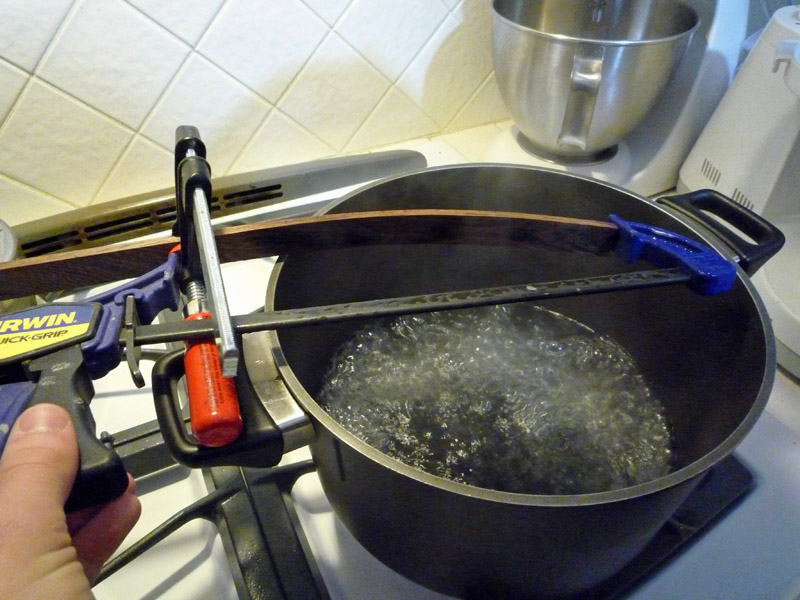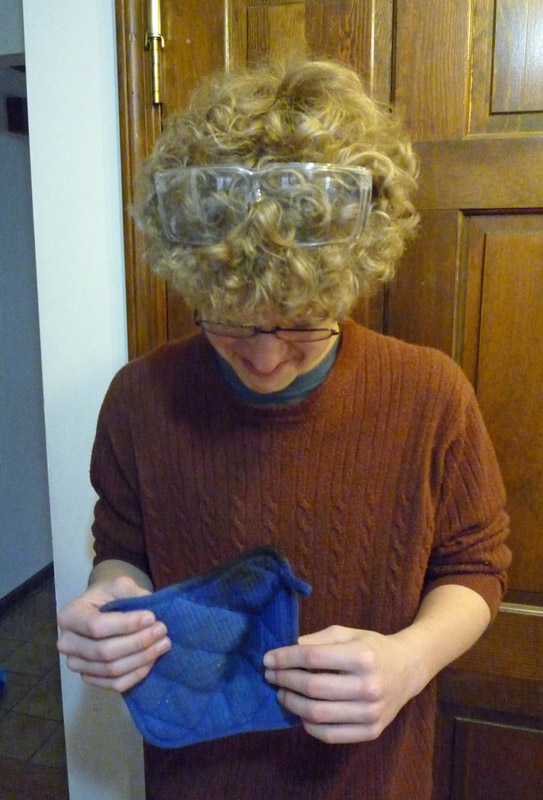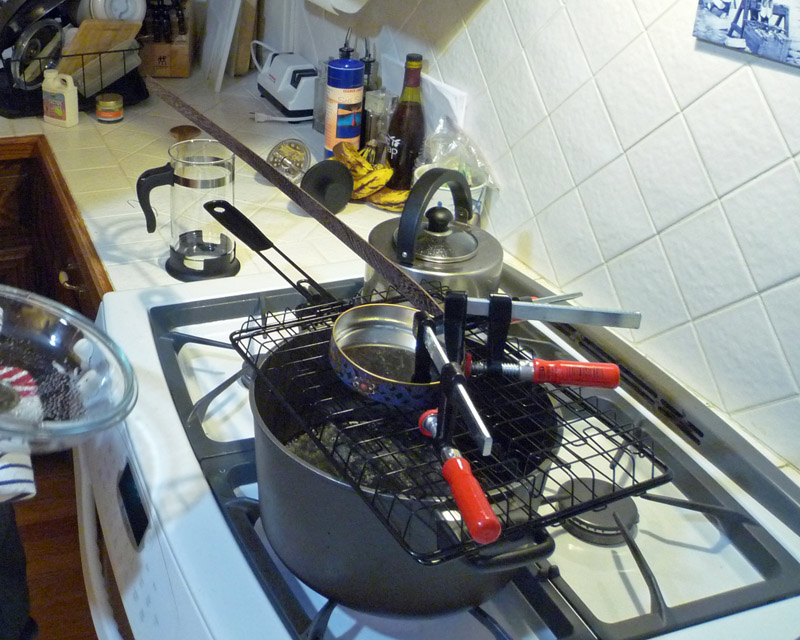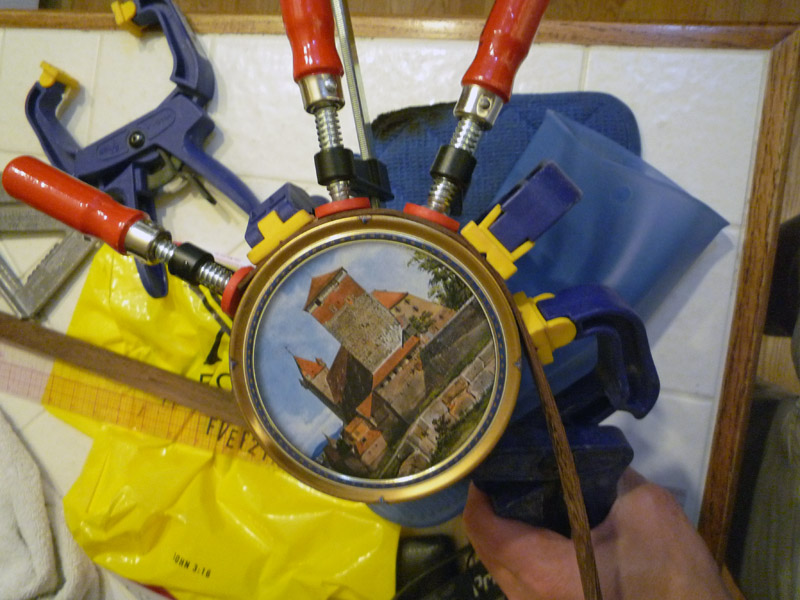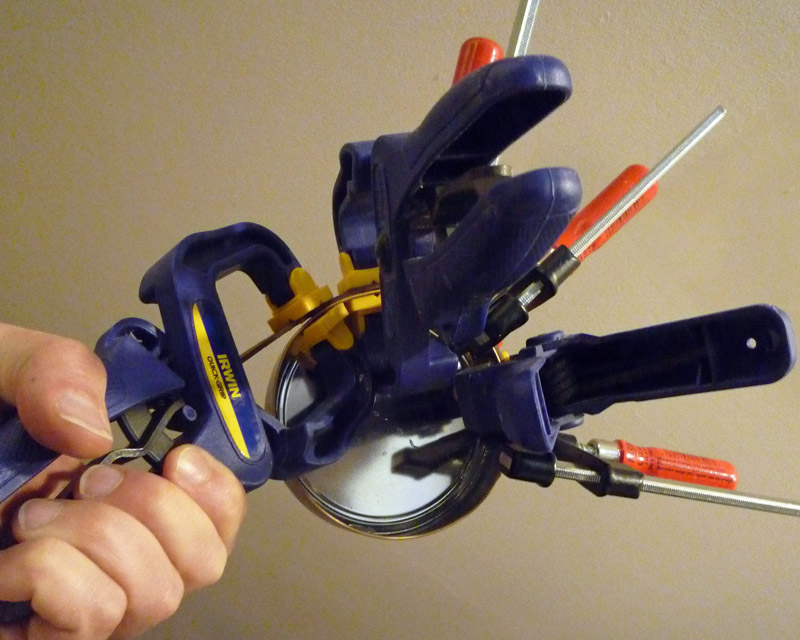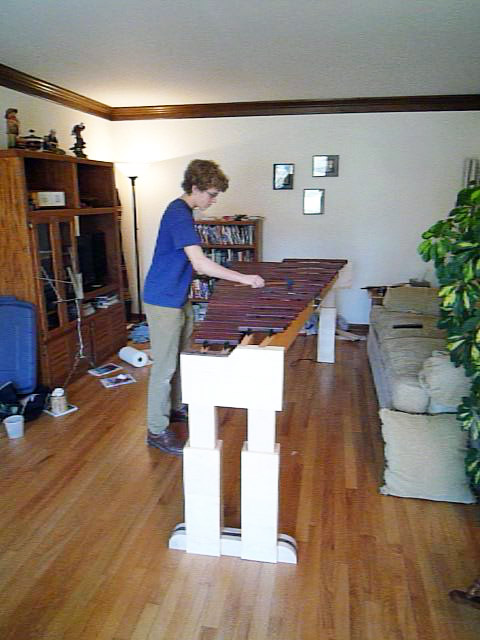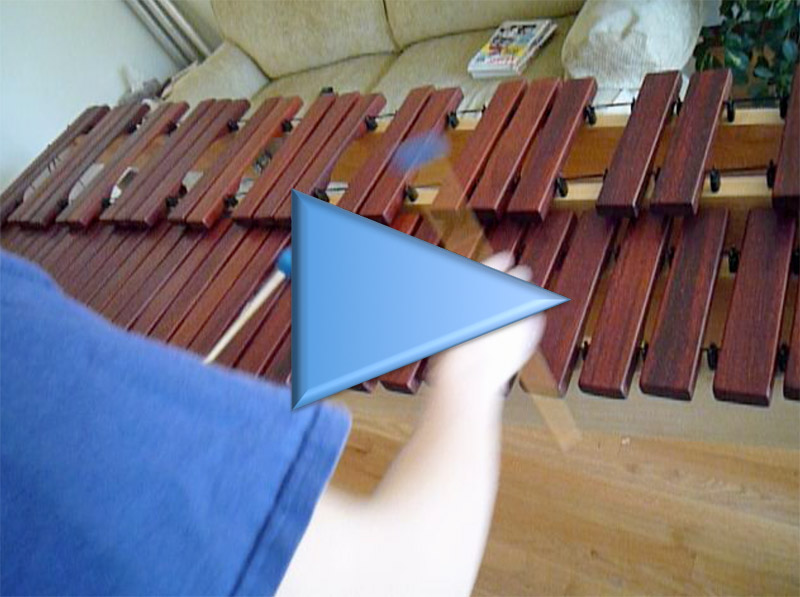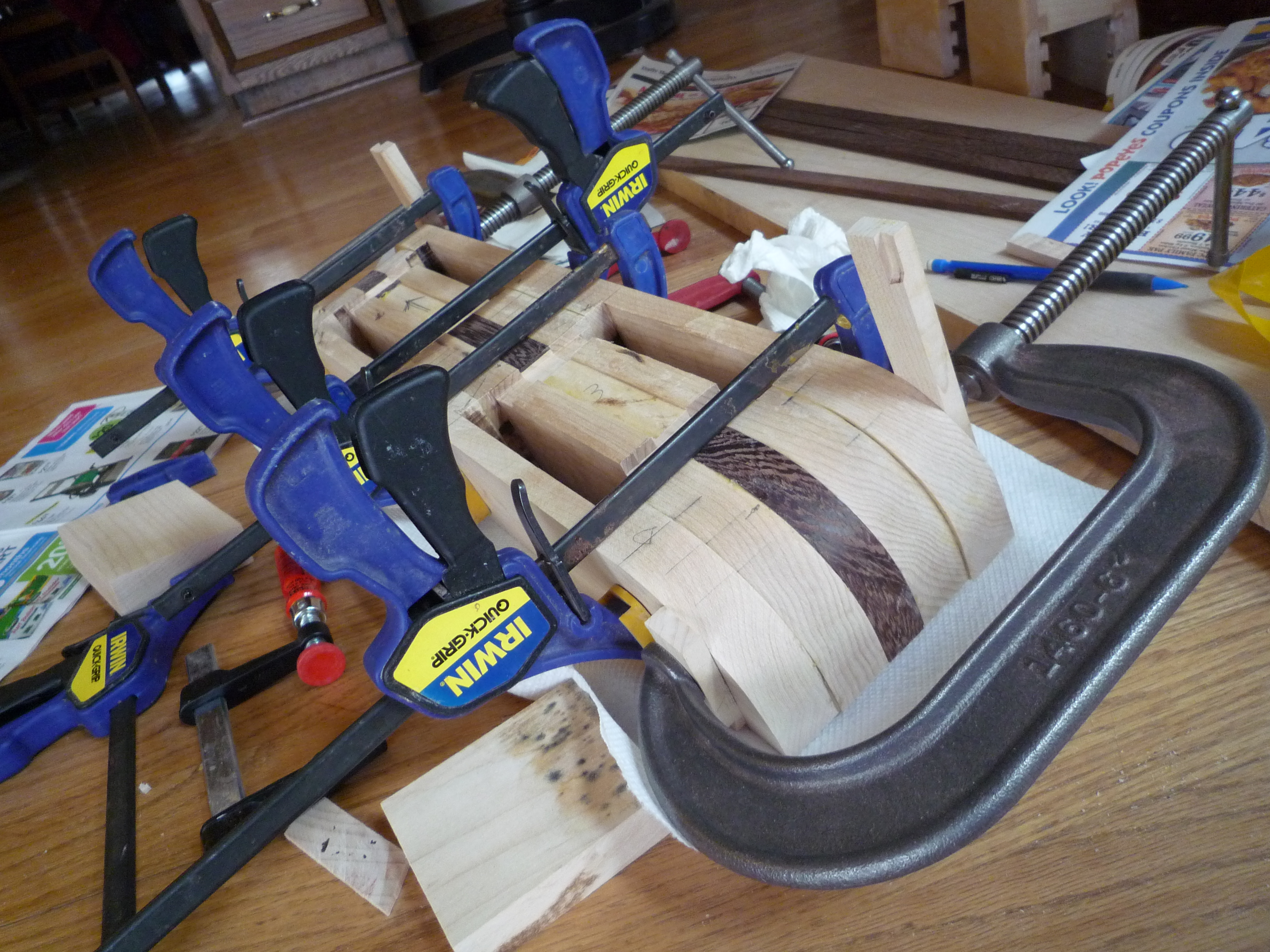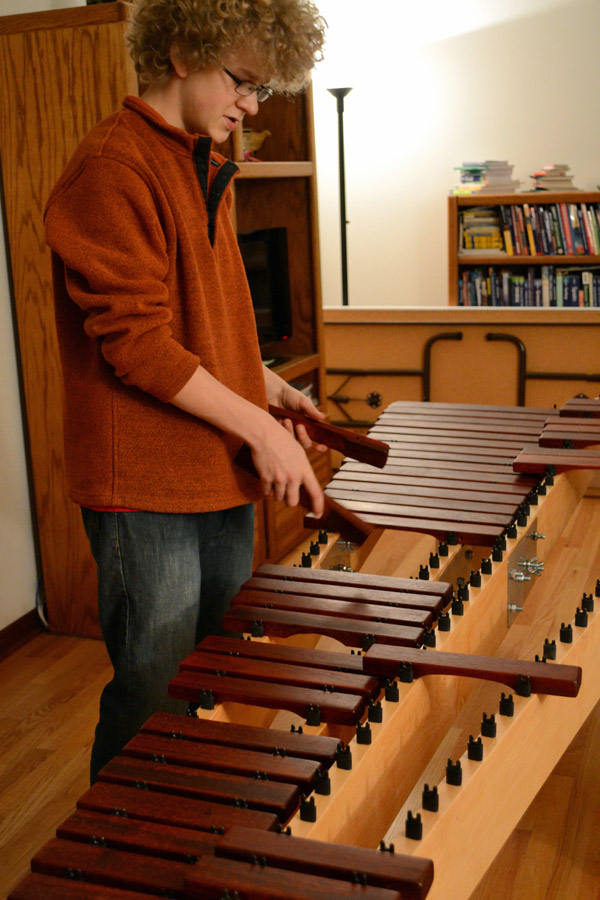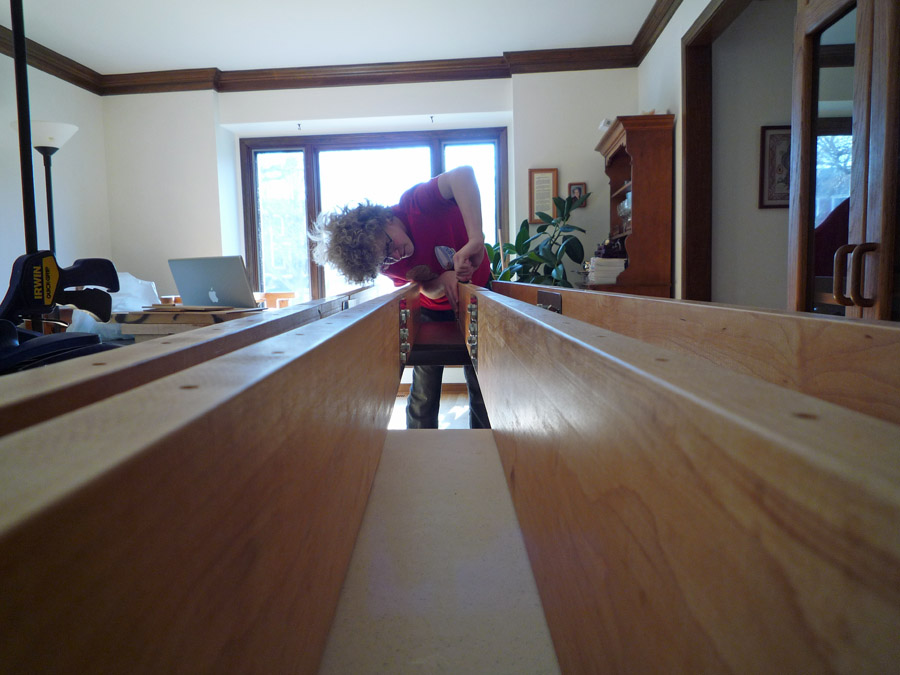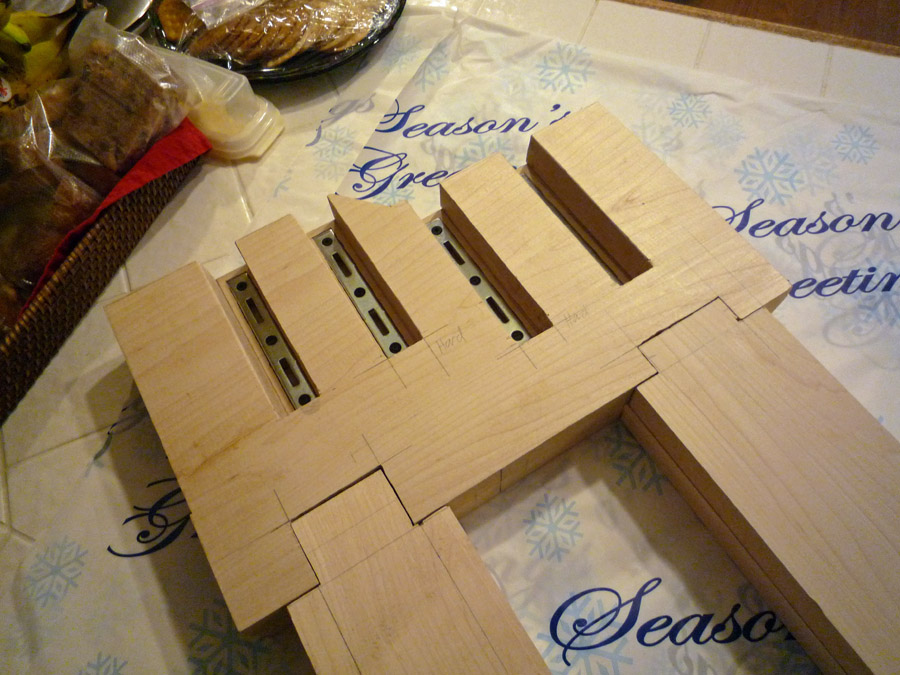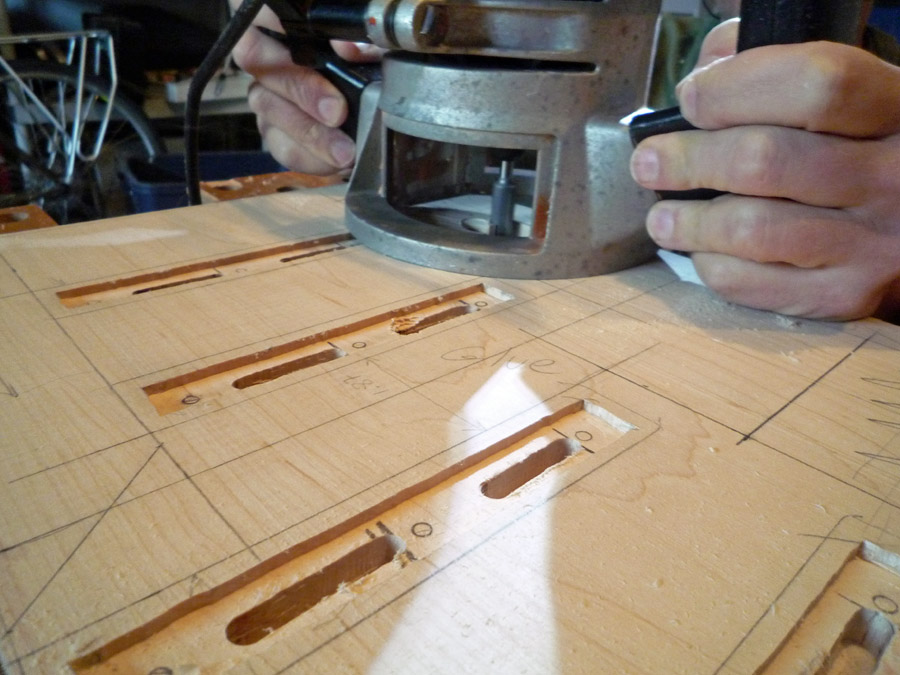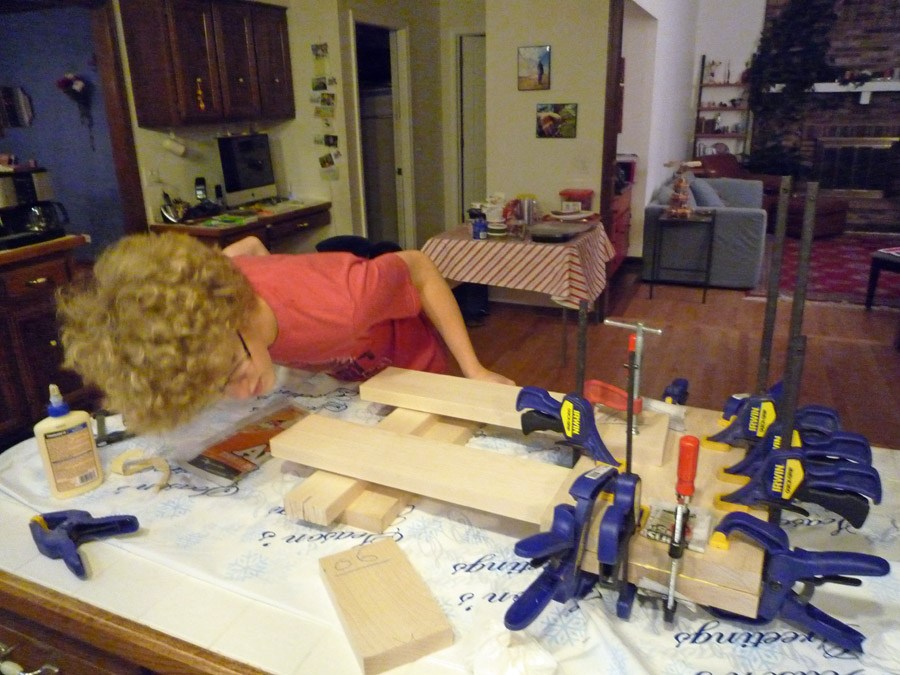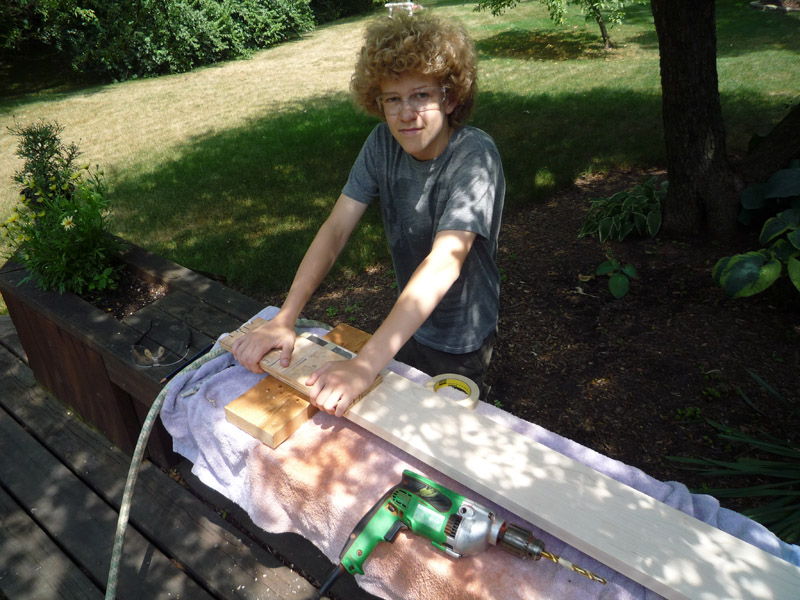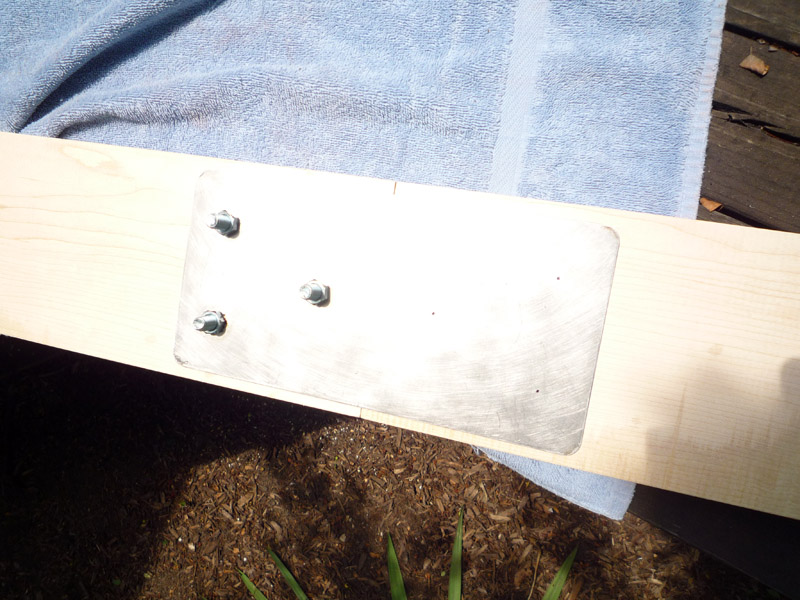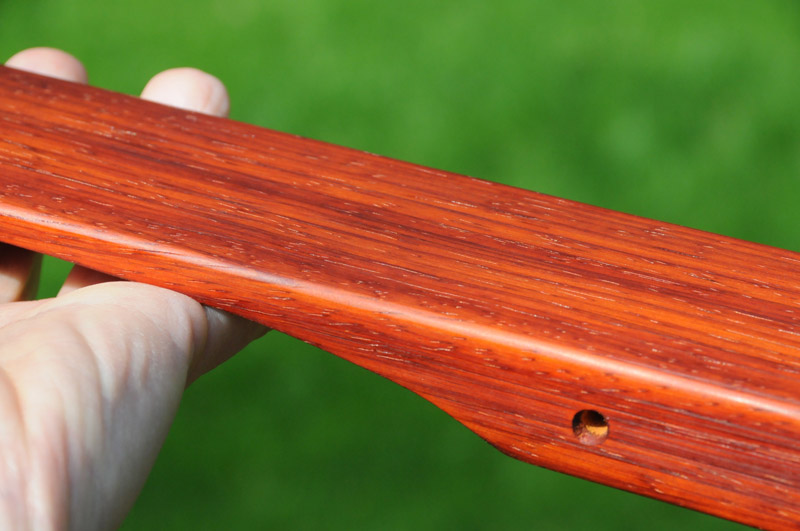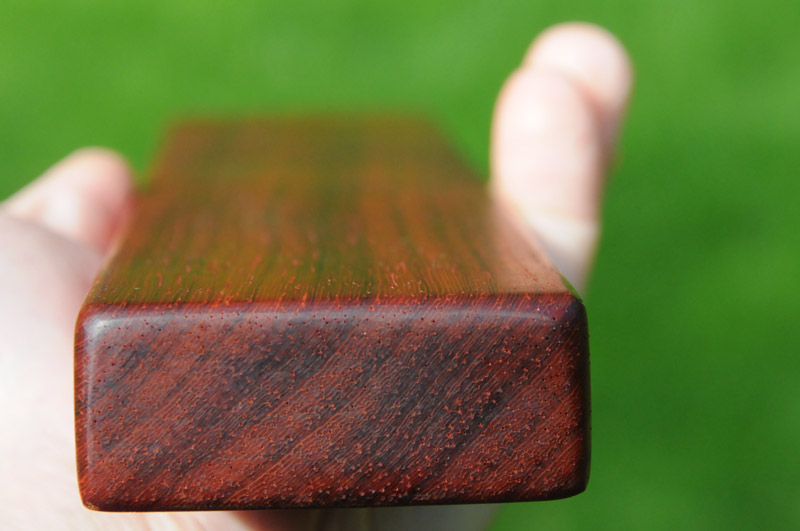Yes, we have a lot of explaining to do. Our last post was back in July! (4 months ago). But first, a short celebration. Whoohoo! On Novemeber 6th, 2012, the marimba played its first music. We are far from done. But we took a major step forward.
Those first lovely notes were breathtaking. The music from the bars just burst from the wood – so soft, so pure, decorated with gorgeous harmonics. The notes have been trapped in the African wood for 9 months. With an effortless mallot tap Paul liberated them. Silky smooth tones rang out. For months we awaited the songs of hypnotic woodgrain undulating through rich red-brown Padauk. Majesty.
I apologize for the poor recording of those first tones. I quickly grabbed the first movie-capable device at hand. Think of it like Enrico Caruso’s first recordings. The beauty of the wooden bars push through the background hiss and poor lighting.
Watch the video of one octave of our soon-to-be 5 octave Marimba:
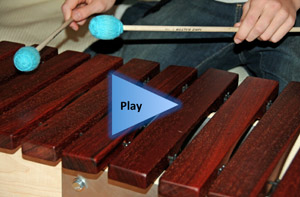
So, what took us so long? It has been 4 months since we were almost done cutting and tuning the keys. However, In July, Paul spent several weeks at Birch Creek:

Serious marimba playing
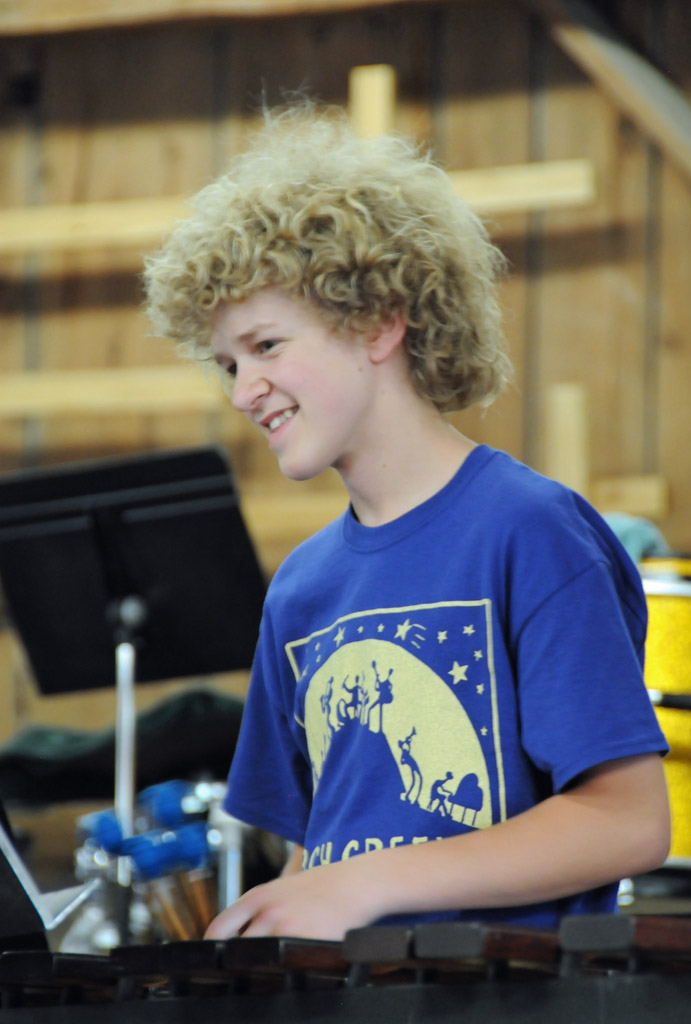
The relief and joy of a piece well played
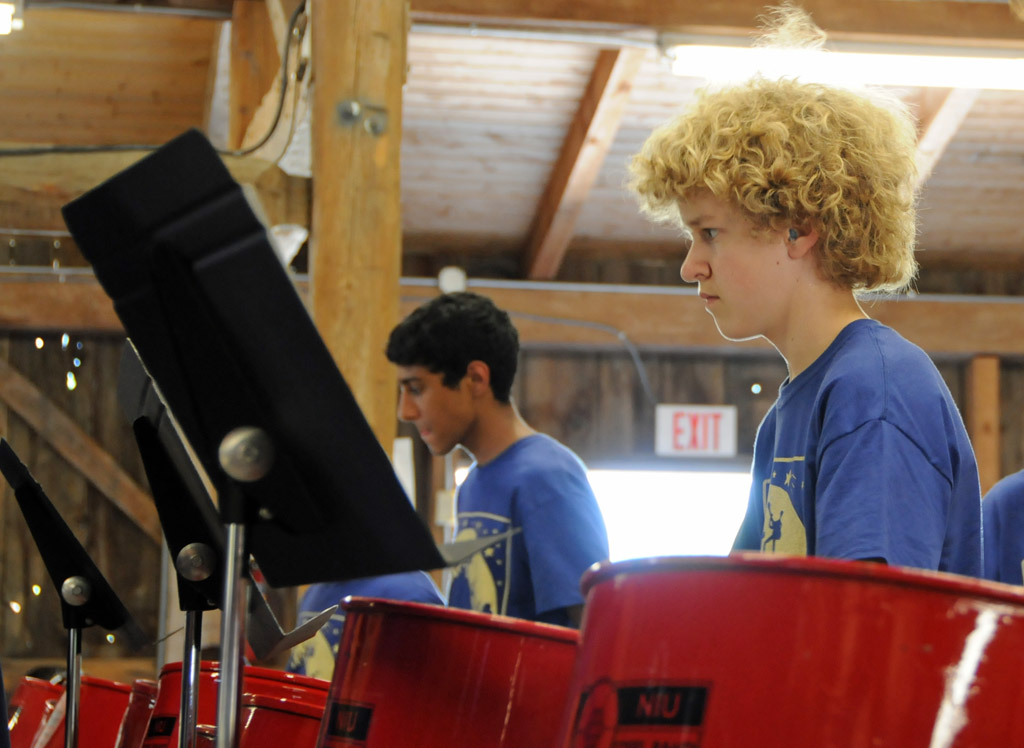
Steel Pan
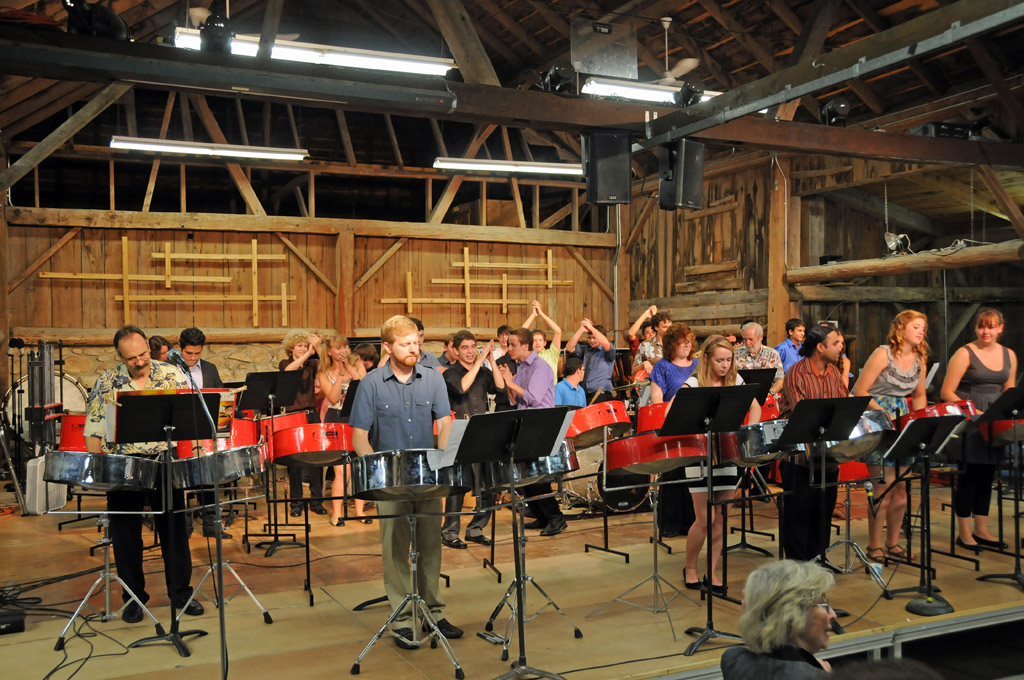
Percussion concert at Birch Creek, in the barn
Less than 24 hours after Paul finished his final performance at Birch Creek in Door County, Paul and I were headed to Slovenia for some hiking. It was a splendid trip. We hiked from Alpine hut to Alpine hut.
For two weeks in August Beth and I were canoeing the remote wilds of the Canadian Wabakimi, taking our vacation. When we returned, Paul was already marching… playing snare in the Naperville North marching band. The marching season just ended, and we are now spending some weeknights and Saturdays trying to finish the Marimba by Christmas.
So… our current work….

The 8.5 foot long marimba
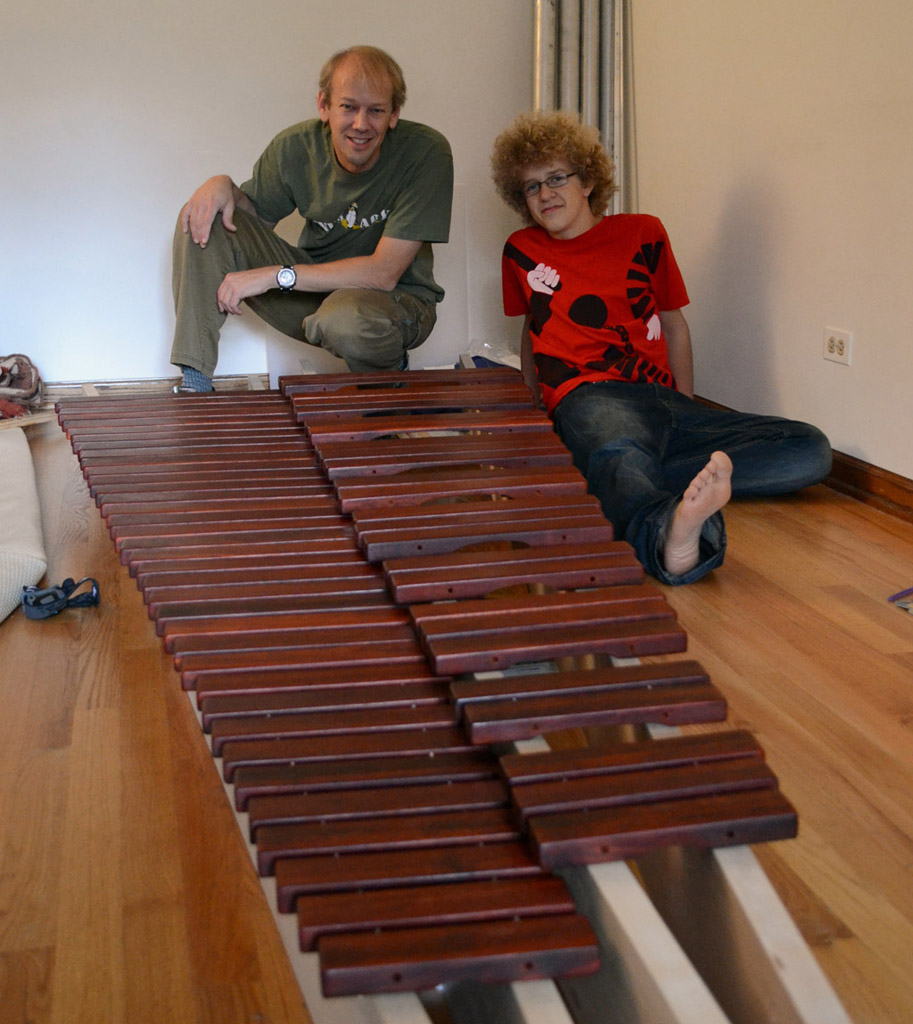
Just enjoying our accomplishment
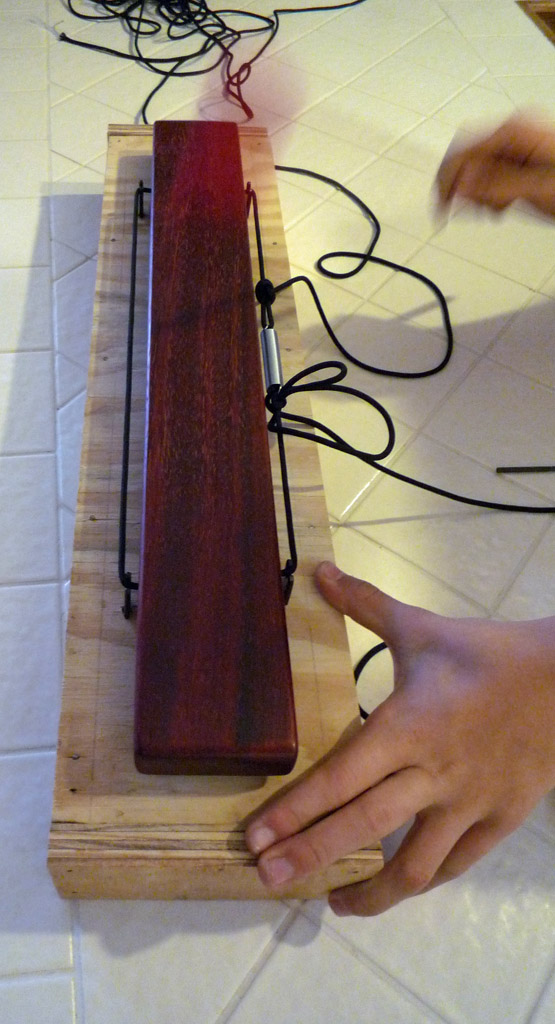
Testing a single bar
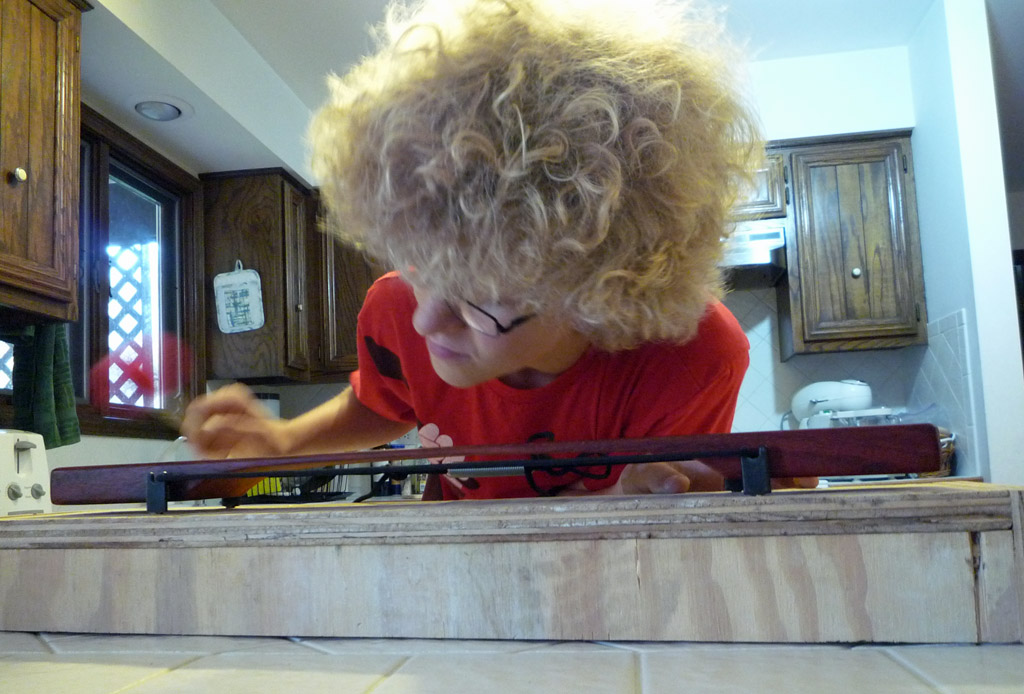
Doesn’t everyone test marimba keys on their kitchen counter?
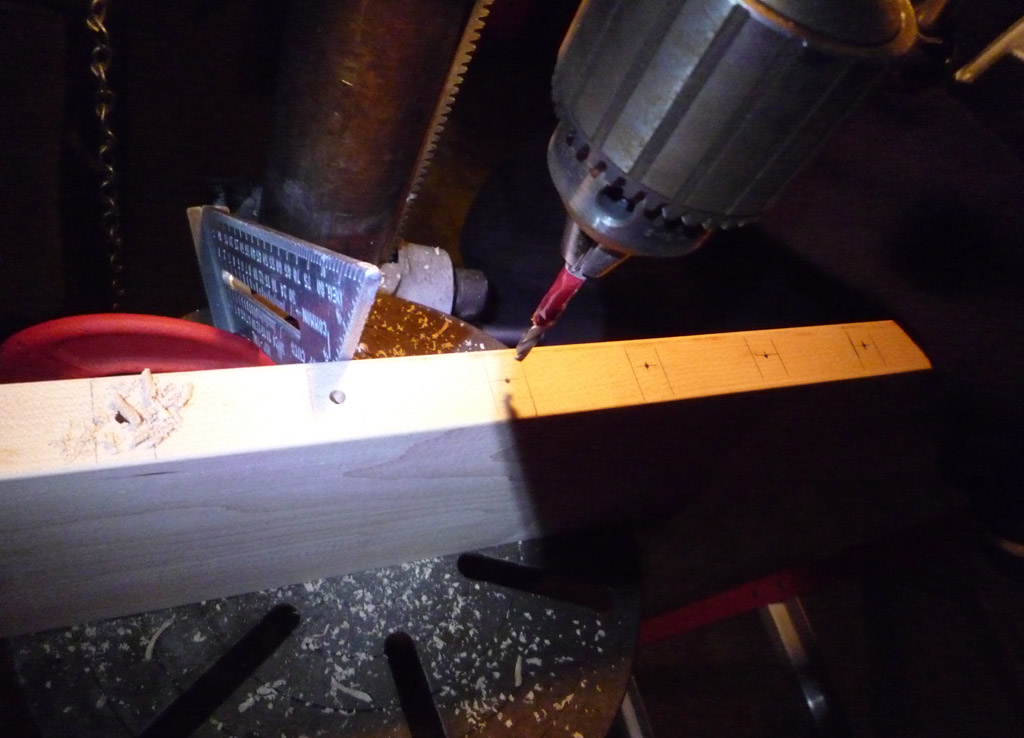
In Dave’s garage (borrowing his drill press), drilling the holes in the rails for the spacers that suspend the bars. 148 holes total.
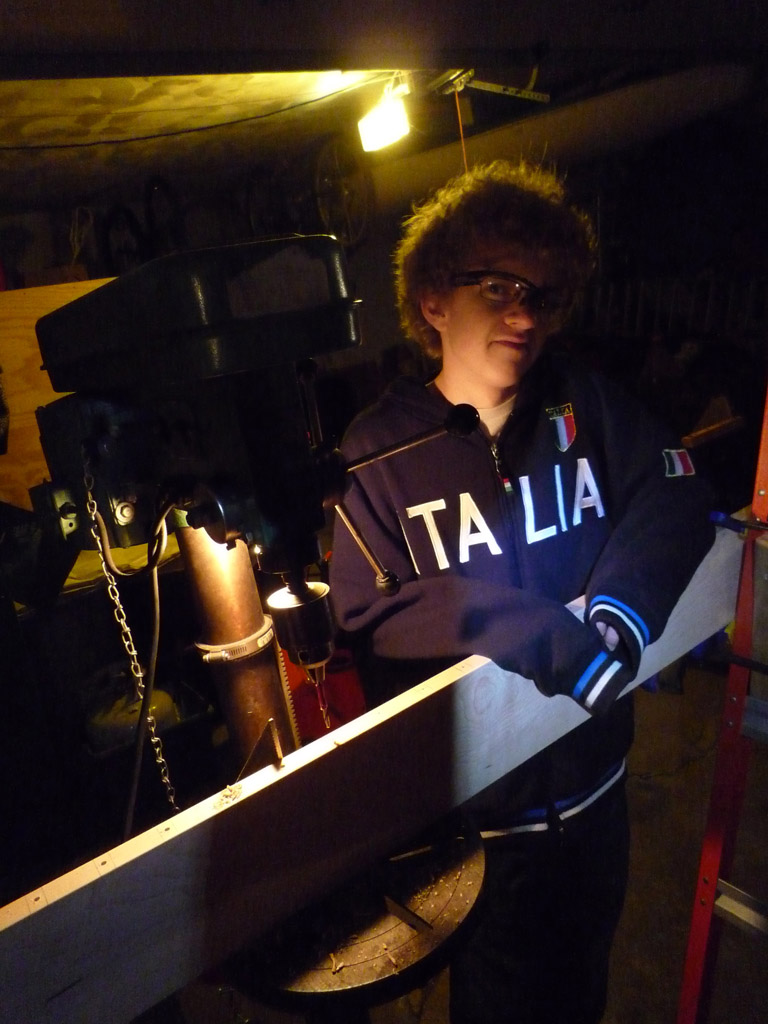
We are not doing anything wrong, but it does seem we look a bit guilty
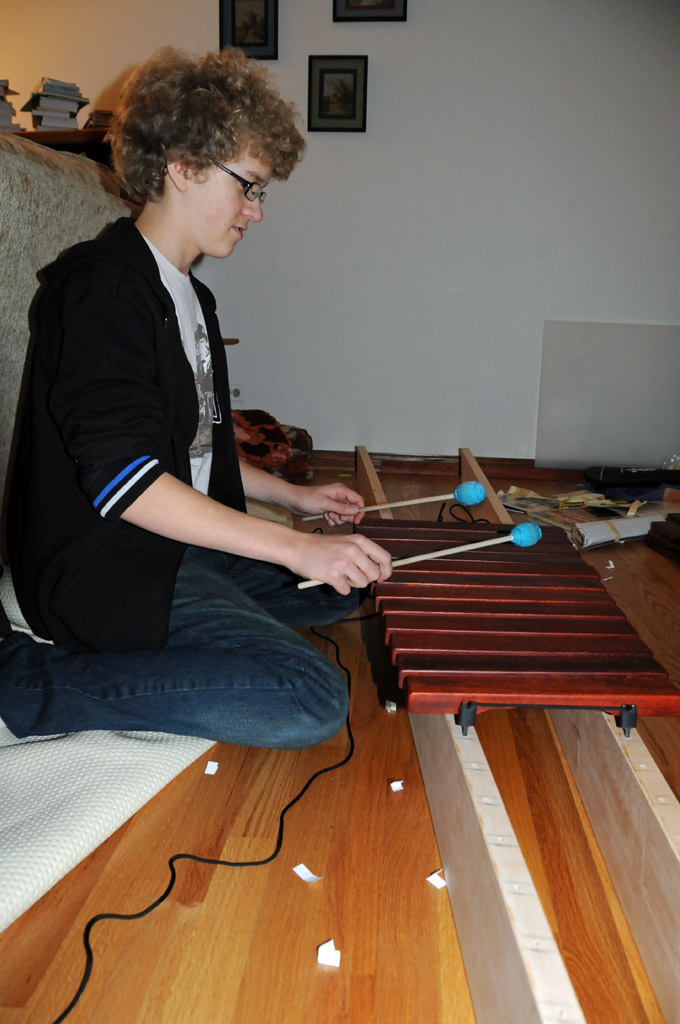
Testing a few bars in our assembly area, the space behind the couch
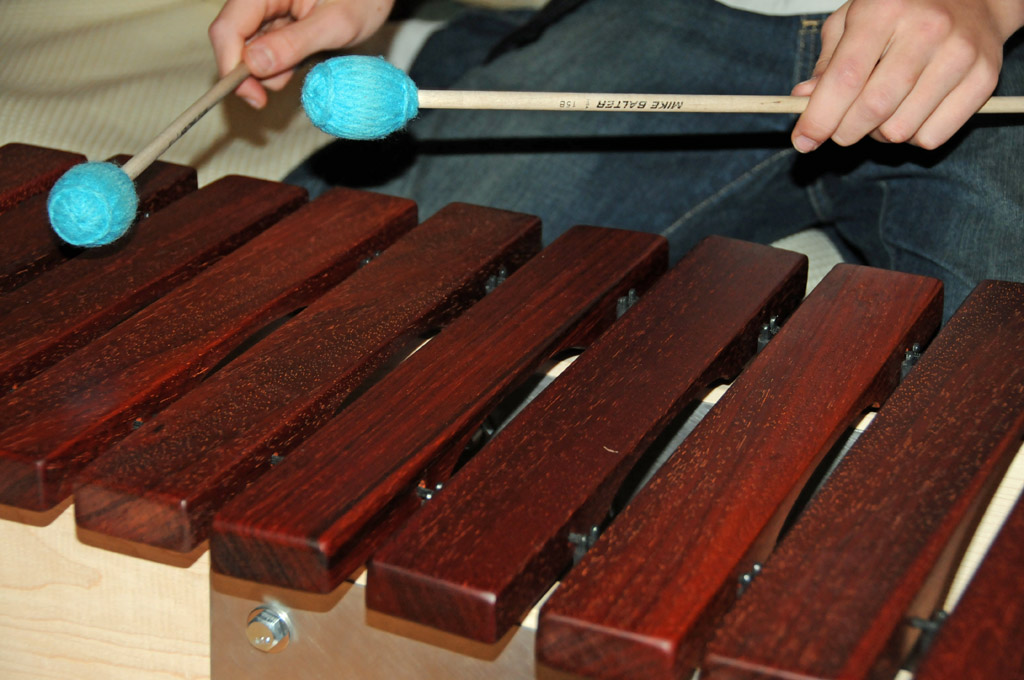
Wow. We are really building a marimba!
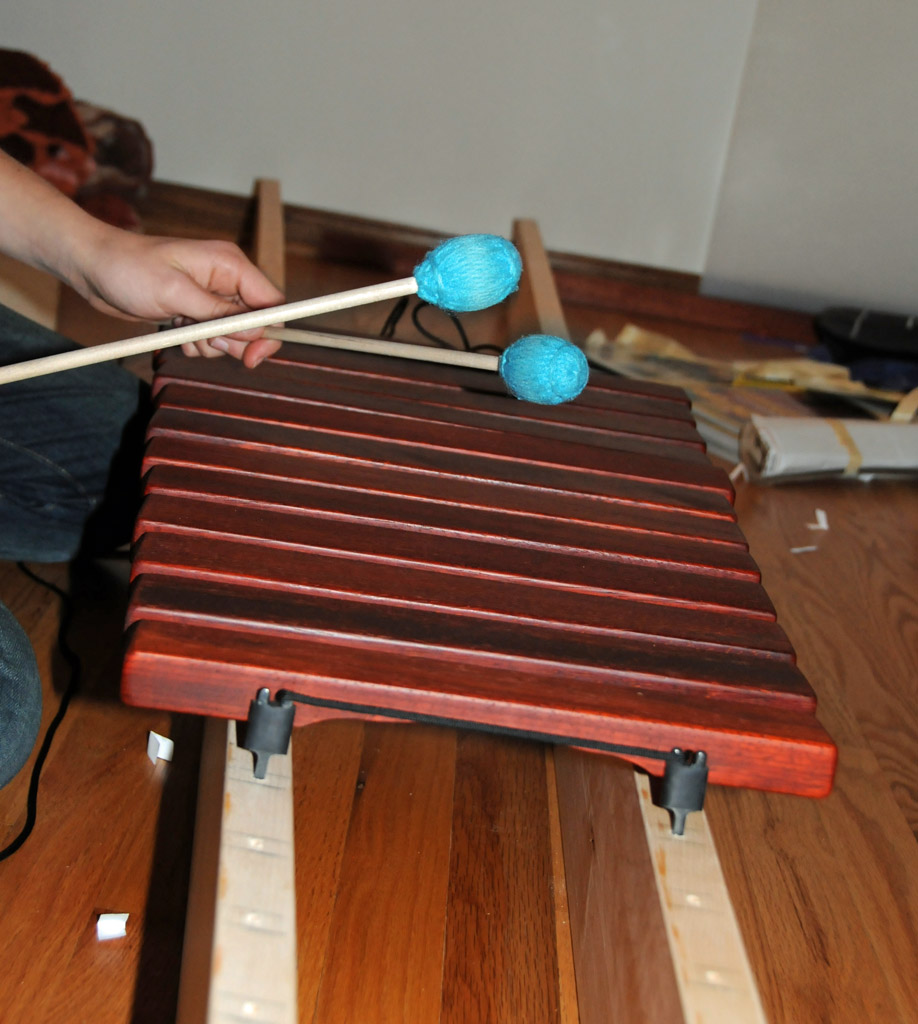
Just image all 5 octave, 61 keys, with resonators to sustain the sound
So there you have it. After several slow months we are now back to work. This weekend we might be able to build the initial end pieces that support the rails. However, we are still designing… While we were in Slovenia, unable to work on the marimba, we spend our evenings in the huts sketching out possible designs for the end pieces in our journal. While some of the designs need to me modified, I think we were on the right track.

One of our original designs, from our Slovenian journal.
If we work hard during Thanksgiving, we may be able to set up all 5 octaves for a test…



